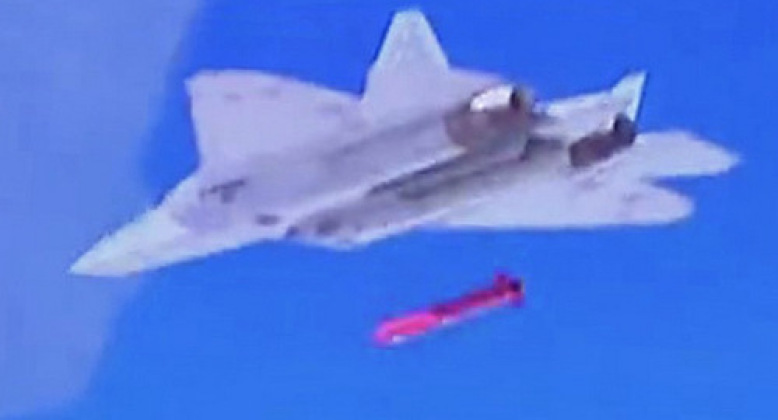News
Latest Technologies For Russia’s New Su-57 Fighter: From AI Powered Data Links to New Radar Absorbent Fibreglass
As the Russian Air Force continues to combat test its new Su-57 fighter aircraft in Ukraine, with 10 of the aircraft currently in service and an estimated 10-14 more expected to join the fleet this year, new information has emerged regarding a number of the new technologies being developed for the aircraft. The fighter has long relied on a range of unique features to compensate for its more limited stealth capabilities and less sophisticated electronics compared to rival Chinese and American fighters, with these ranging from access to hypersonic ballistic missiles and laser defence systems to deployment of air to air missiles with extreme ranges or with unique active phased array antenna guidance systems. In early April Ruselectronics claimed a new radar absorbent material had been developed which could seriously enhance the radar evading capabilities of Russian aircraft, and was able to absorb up to 95 percent of radar waves. Use of low reflectivity fibreglass was presented as a highly beneficial alternative to stealth coatings, used on Chinese and American stealth aircraft, due to its much lower maintenance needs.
Applying stealth coatings has been a leading cause for low availability rates on American stealth aircraft, as well as a major contributor to their high operational costs, which means that the new Russian radar absorbent material if successful could provide the Su-57 with a major edge – supplementing the fighter’s already strong focus on low operational costs and the ability to operate with a small logistics footprint. It remains uncertain when the new material could be considered ready for use on military aircraft, or which would be the first to employ it, but the Su-57 is a leading candidate as currently Russia’s only manned stealth aircraft.

Another new technology recently revealed to have been developed for the fighter is a data link system which, according to a press release from the Russian corporation Rostec, uses artificial intelligence to encode data and its transfer between platforms – enabling noise-immune coding through the use of parallel channels. This has significant implications for the Su-57’s network centric warfare capabilities which are considered increasingly critical in fifth and sixth generation aerial warfare and are a central focus of all next generation combat aviation programs. For the Su-57, which is reportedly being developed into a controller aircraft to operate alongside unmanned ‘wingman’ aerial vehicles such as the S-70 Okhotnik, the ability to communicate, and to relay data back from its massive sensor suite of six radars and an IRST system, is particularly vital. Sharing data between multiple sensors, including ground based radars which form part of Russia’s very large air defence network, also provides one of the most effective means of countering enemy stealth aircraft and compensating for the Su-57’s more limited stealth capabilities compared to rival Chinese and American aircraft.

Beginning development in the early 2000s after the cancellation of the promising MiG 1.42 fifth generation fighter program, the Su-57 was seen to be better suited to the limitations of post Soviet Russia’s industry and defence budget and by some estimates could be produced at just half the price of the MiG. Its operational costs reportedly do not significantly exceed those of the previous fourth generation of fighters. Multiple delays, however, have meant that the first full strength Su-57 squadron will only be formed close to a decade behind initial projections, placing the program well behind the more ambitious Chinese J-20 and American F-35 programs. Nevertheless the fighter is expected to revolutionise the capabilities of the Russian Air Force by replacing the Su-27 Flanker and its derivatives the Su-30 and Su-35 both in production and in frontline service, as well as in the arsenals of leading clients for Russian aircraft such as Algeria and Vietnam. Deployments in Ukraine have provided Su-57 operators with far greater combat experience than those of any other fighter of its generation, including not only in air to air combat, but also employment against a well armed state actor for strike and even air defence suppression missions. These missions have indicated a degree of combat readiness which may exceed that of the top Western stealth fighter the F-35, which suffers from around 800 performance bugs, is still considered far from ready for such high intensity combat and lacks compatibility with cruise missile classes needed to conduct similar operations.












